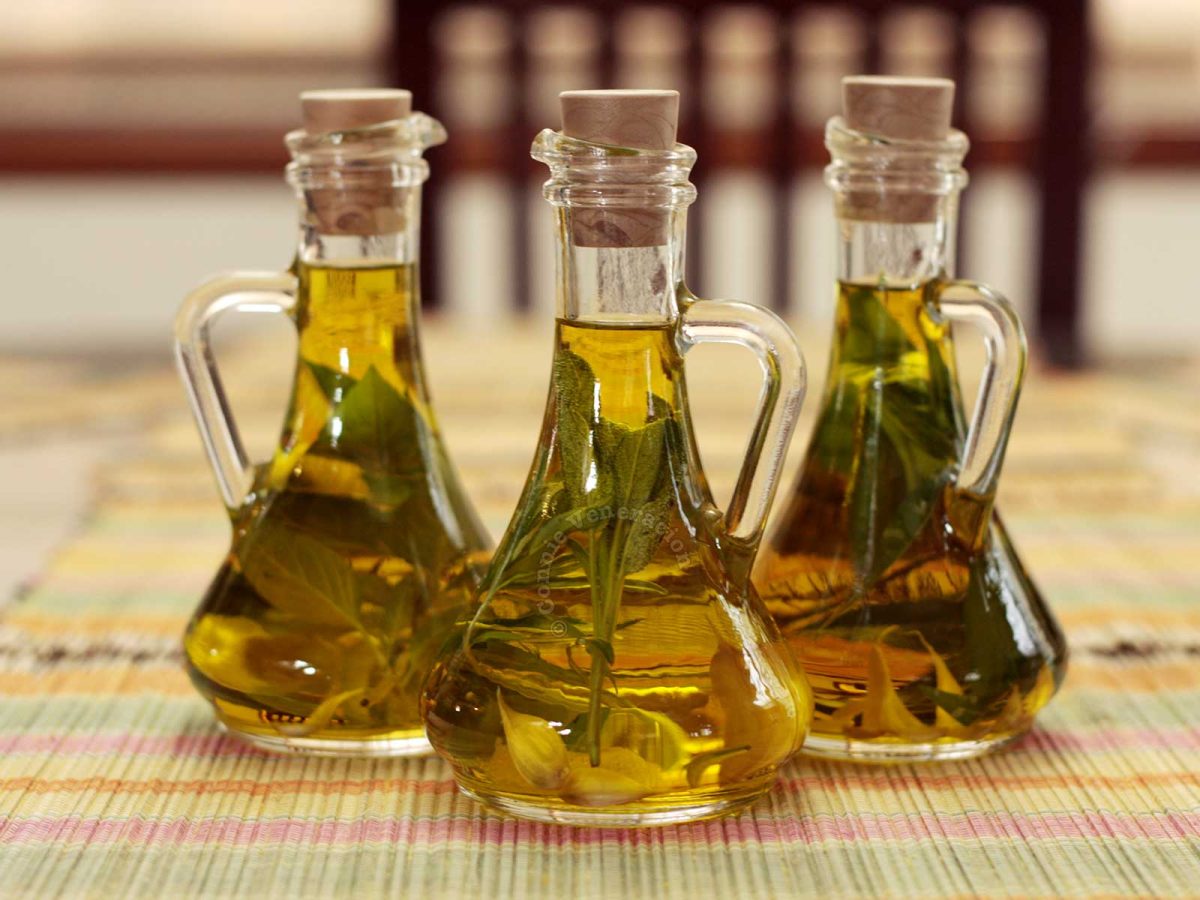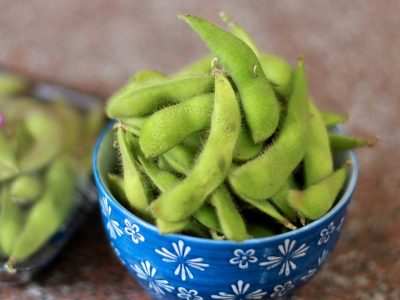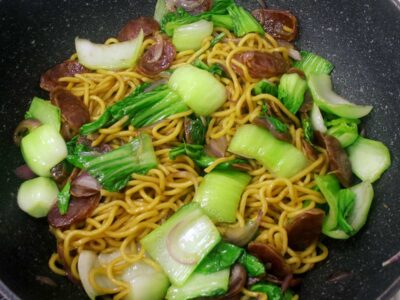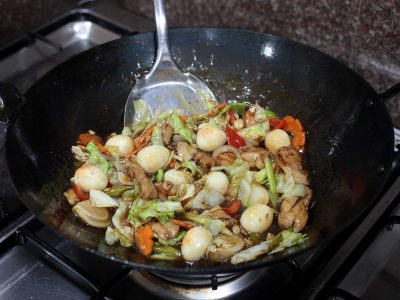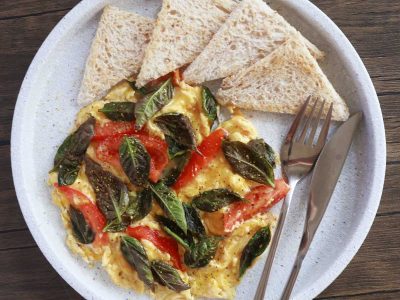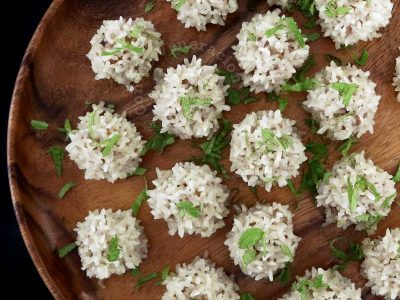But did you know that it’s easy and inexpensive to make herb-infused olive oil at home? Not only do you cut on cost, you can also get as creative as you wish, combining herbs and spices that suit your taste more. I tell you, the only part of the preparation that took a long time was drying the bottles thoroughly after washing them inside and out. After that, it was a breeze.
But, first things first. What kind of bottle should you use? You can use just about any bottle with a tight cover. However, note that metallic bottle covers can get rusty over time. And pouring oil from a bottle with a wide round mouth might be messy. I chose these clear glass bottles. They have spouts for easy and spill-free pouring, and rubberized cork stoppers to keep the flavor and aroma in. I consciously stayed away from metal caps because they might leave a metallic taste in the oil.
Second consideration: use fresh or dried herbs? I used fresh (I grow herbs in my garden) but there’s no reason why you can’t use dried. Note though that you may have to refrigerate the oil if you use fresh herbs because the water content of the herbs might make the mixture prone to bacteria growth at room temperature.
If using fresh herbs, wash then dry them between stacks of kitchen towels. Or you can place them in the oven (temperature at the lowest setting) for a couple of minutes just to get rid of surface water. Cut leafy herbs to allow them to expel their flavors faster or leave them whole if you want to make the oil bottles decorative (I left them whole because I am entertaining the idea of giving away herb-infused olive oil to friends-who-cook for Christmas).
Third consideration: what combination of herbs to use. Ah, that’s where you can get creative. Basil, thyme, tarragon, sage, rosemary, oregano, cilantro, bay leaves… combine two or more. Then, add some spices and aromatics — peppercorns, garlic cloves, lemon or lime peel…
If there is a combination that you find particularly good with chicken, for instance, use that for one bottle of oil. Have another bottle with a combination of herbs and spices that’s good with red meat, another one to go with seafood, for salads…
Note that you cannot use the oil immediately. You have to leave them alone for at least a week to allow the flavors and aromas to be absorbed by the olive oil.
Not a fan of olive oil? You can haveherb-infused cooking oil. Slip some ginger, garlic and shallot in your vegetable cooking oil, allow the flavors to develop for a week or two and imagine what sautéing and stir frying would be like.
Ah, I tell you, playing with things like this in the kitchen beats the stress every time.

